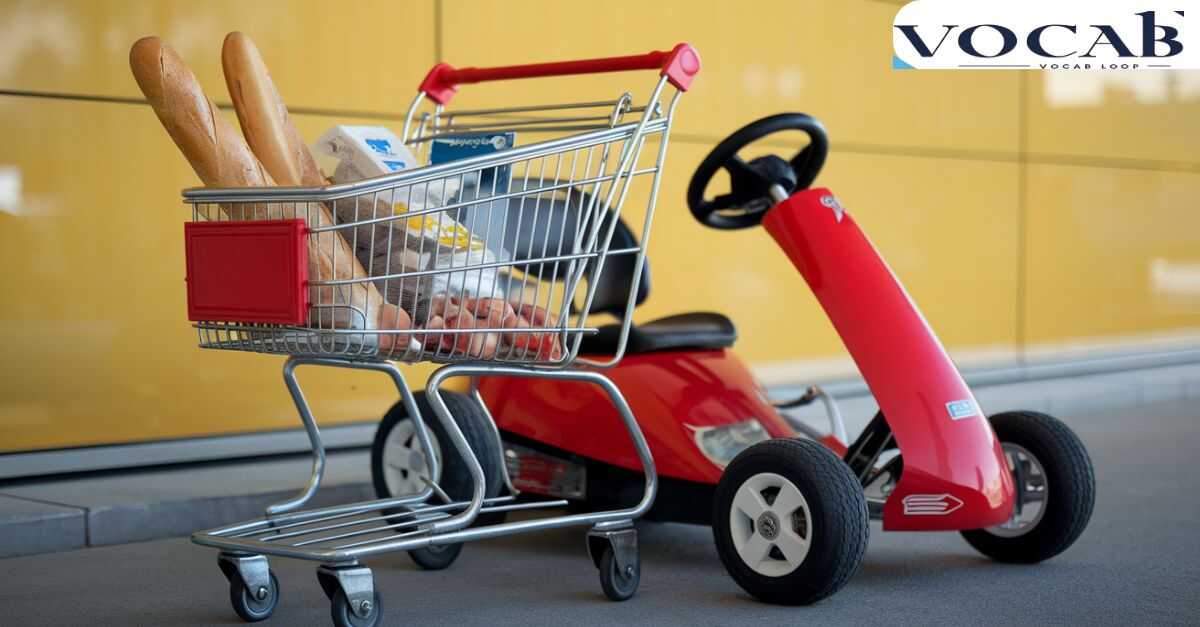The terms “cart” vs “kart” may sound similar, but they refer to different things with distinct histories and uses. A cart traditionally refers to a wheeled vehicle used for carrying goods or people, with roots going back to Old English and agricultural practices.
On the other hand, a kart refers to a small, motorized vehicle used for recreational racing, with the term emerging in the mid-20th century. While both involve wheeled vehicles, their purposes and contexts are quite different.
What is a “Cart”?

Definition:
A cart is a simple yet powerful invention that’s been around for over 4,000 years. Think of it as the grandfather of all wheeled vehicles. From the earliest wooden carts pulled by oxen to today’s sleek shopping carts, these tools have shaped how we move things from place to place.
Quick Facts About Carts:
- First appeared around 2000 BCE in Mesopotamia
- Changed farming and trade forever
- Now found in nearly every industry worldwide
- Range from simple hand carts to complex motorized versions
Common Types of Carts and Usage
1. Shopping Carts

- Average capacity: 150-200 pounds
- First invented in 1937 by Sylvan Goldman
- Over 25 million in use in the US alone
- Modern features include:
- Child seats
- Anti-theft wheels
- Scanner holders
- Eco-friendly materials
2. Horse-Drawn Carts

- Still used in many communities worldwide
- Common types:
- Delivery wagons
- Farm carts
- Tourist carriages
- Traditional celebration carts
- Average load capacity: 500-1,500 pounds
3. Hand Carts
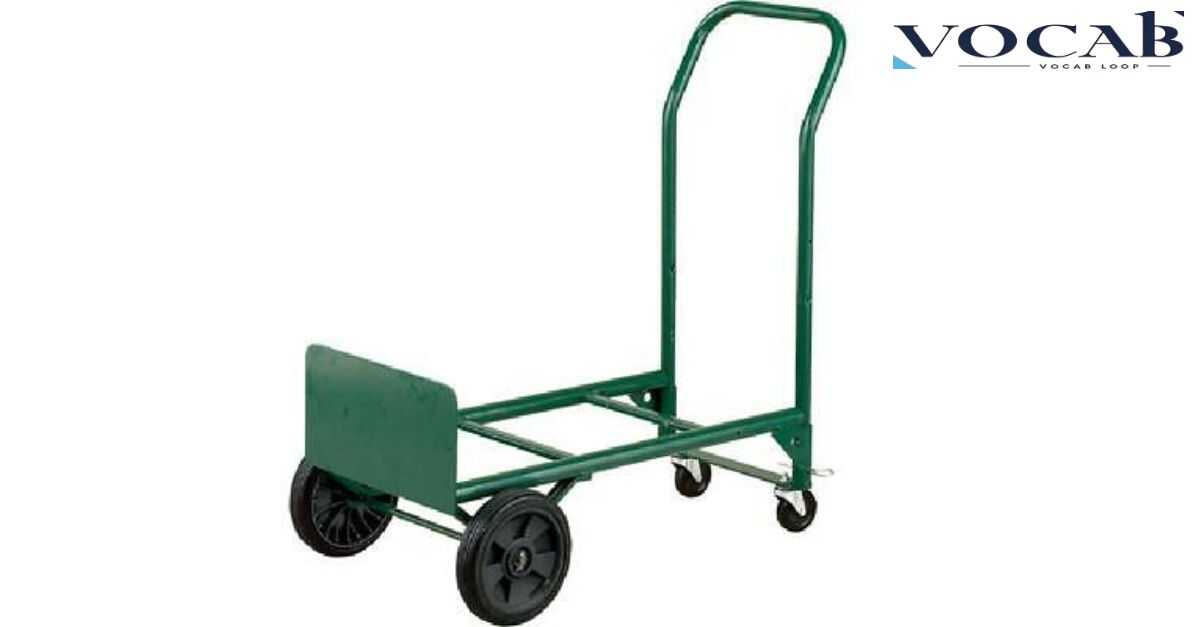
- Popular in urban delivery
- Types include:
- Flatbed carts
- Folding carts
- Platform trucks
- Stair climbers
- Typical capacity: 200-600 pounds
4. Motorized Carts
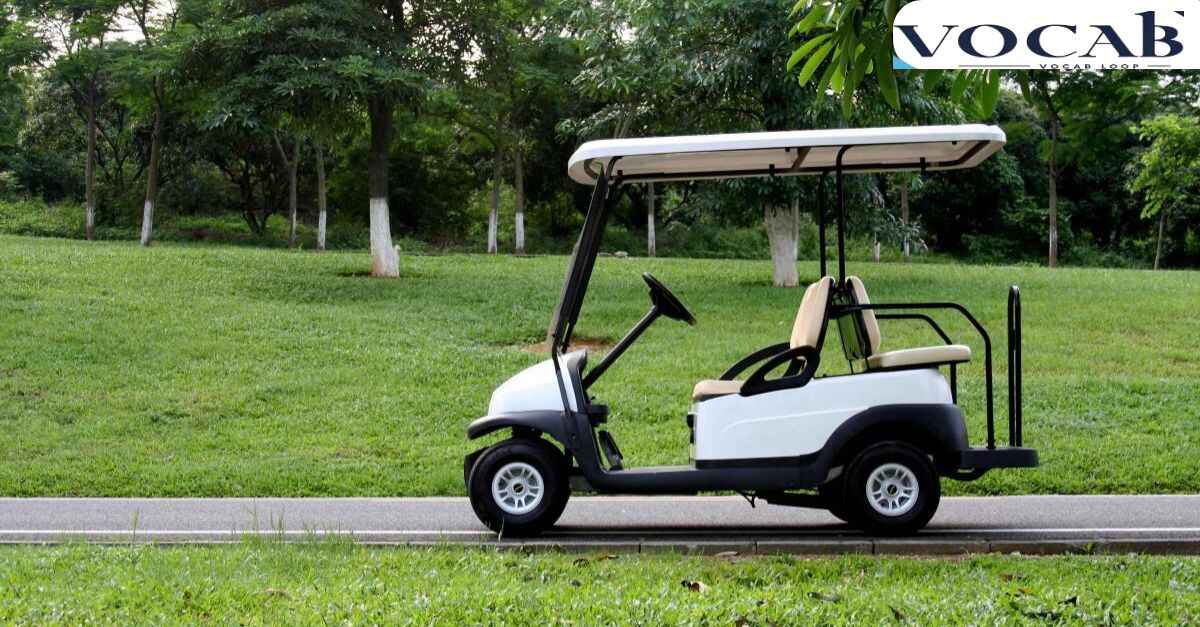
- Growing market: $3.2 billion in 2023
- Common uses:
- Airport transport
- Hospital logistics
- Warehouse operations
- Campus mobility
- Speed range: 5-15 mph
What a Cart Looks Like
Modern carts share some basic features:
| Feature | Purpose |
| Wheels | Usually 2-4 for stability |
| Frame | Steel, aluminum, or composite |
| Handle | Ergonomic design for pushing/pulling |
| Platform | Flat surface or basket for goods |
| Brakes | Manual or automatic systems |
Now stop can you have a tip to remember?
if your answer is “No” then i can give you a tip to remember
Tip: Cart: carries goods; Kart: races.
What is a “Kart”?

Definition:
A kart represents the exciting world of motorsports in miniature. Unlike its load-bearing cousin, a kart focuses on speed and agility. These lightweight vehicles pack serious power into a small frame, offering thrills from 20 to over 150 mph.
Key Kart Features:
- Engine sizes: 50cc to 250cc
- Frame height: 2-4 inches from ground
- Weight range: 150-250 pounds
- Top speeds by class:
- Kiddie karts: 20-25 mph
- Rental karts: 40-50 mph
- Racing karts: 85-150 mph
Types of “Kart”
Go-kart:
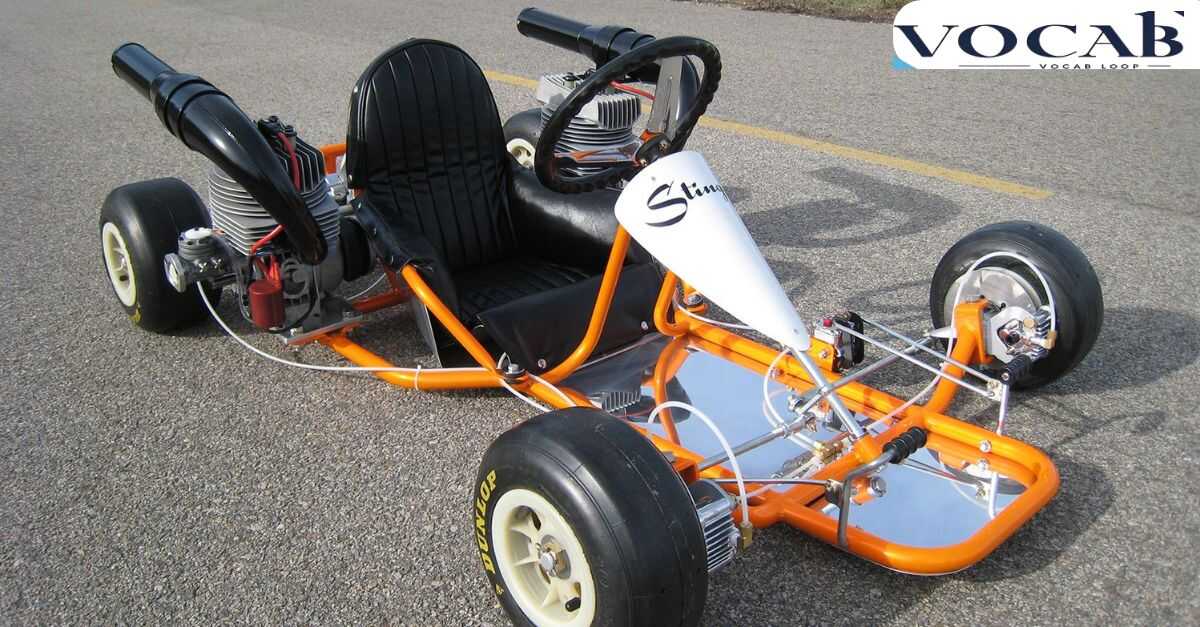
The world of go-karts splits into three main categories:
1. Recreational Karts
- Average cost: $2,000-$5,000
- Engine size: 50cc-100cc
- Safety features:
- Roll cages
- Padded steering wheels
- Safety belts
- Impact-absorbing bumpers
2. Racing Karts
- Professional investment: $8,000-$15,000
- Engine specs:
- 125cc-250cc engines
- 6-speed sequential gearboxes
- Custom brake systems
- Race classes:
- Sprint racing
- Endurance racing
- Shifter kart racing
- Superkart events
3. Rental Karts
- Business investment: $3,000-$7,000 per kart
- Features:
- Restricted engines for safety
- Heavy-duty construction
- Remote shutdown capability
- Automatic transmission
Mario Kart:

Nintendo’s blockbuster racing series has shaped both gaming and real-world karting:
Game Impact:
- Total series sales: Over 150 million units
- Latest release: Mario Kart 8 Deluxe (50 million+ copies)
- Real-world influence:
- Themed racing events
- Karting center designs
- Racing gear aesthetics
Kart vs Cart: How Do You Spell Go Kart?
Regional spelling differences tell an interesting story:
| Region | Common Spelling | Usage Context |
| US | Go-kart/Go-cart | Both accepted, “kart” preferred in racing |
| UK | Go-kart | Standard spelling for all uses |
| Canada | Go-kart | Racing and recreational use |
| Australia | Go-kart | Professional and casual contexts |
Cart vs Kart: The Differences
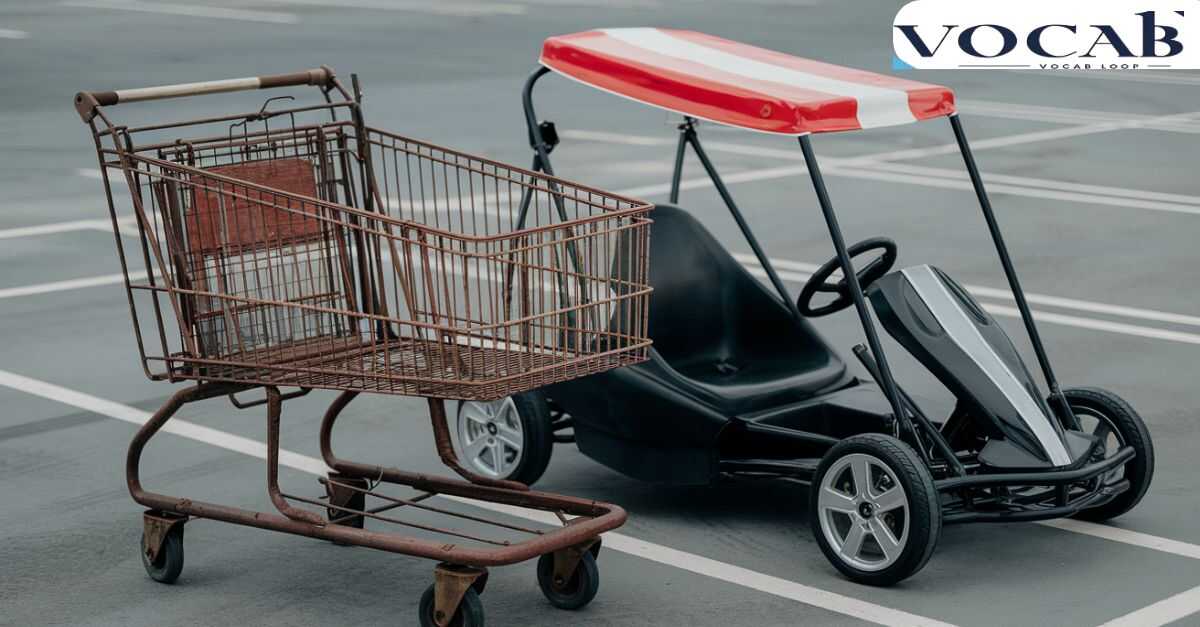
Meaning:
Cart Purpose:
- Moving goods efficiently
- Supporting daily operations
- Enhancing workplace productivity
Kart Purpose:
- Racing competition
- Entertainment
- Skills development
- Professional motorsport training
Usage:
The differences extend to every aspect:
| Aspect | Cart | Kart |
| Main Use | Transport | Racing/Recreation |
| Users | General public | Enthusiasts/Racers |
| Location | Stores/Warehouses | Tracks/Parks |
| Power | Manual/Electric | Gas/Electric |
| Speed | 0-15 mph | 20-150 mph |
| Cost | $50-$1,000 | $1,500-$15,000 |
Physical Characteristics:
Cart Construction:
- Heavy-duty materials
- Focus on durability
- Storage capacity priority
- Simple mechanics
Kart Engineering:
- Lightweight materials
- Aerodynamic design
- Performance focus
- Complex mechanical systems
Origins of “Cart” vs “Kart”
“Cart”:
Historical timeline:
- 2000 BCE: First wooden carts
- 500 BCE: Iron-rimmed wheels
- 1800s: Industrial revolution improvements
- 1937: First shopping cart
- Present: Smart cart technology
The word “cart” has a long history in the English language, dating back to the Middle Ages. It originates from the Old English word “cræt”, which referred to a type of wheeled vehicle used for carrying loads.
This, in turn, came from the Proto-Germanic word “kratto”, meaning a basket or frame for carrying things. Similar words exist in other Germanic languages, such as Old Norse “kartr”, indicating that the concept of a wheeled vehicle for transportation was widespread in early Germanic cultures.
By the 13th century, the word “cart” had come to refer more specifically to a two-wheeled vehicle, usually pulled by animals like horses or oxen, used for transporting goods, agricultural products, or people. Over time, its meaning expanded to include various types of wheeled vehicles, including shopping carts, hand carts, and food carts.
“Kart”:
Evolution of modern karting:
- 1956: Art Ingels builds first go-kart
- 1957: First manufactured karts
- 1959: International Kart Federation formed
- 1960s: Global racing standardization
- Present: Electric kart innovation
The word “kart” is a more recent development, emerging in the mid-20th century. It derives from the word “cart,” but with a specialized meaning. The term “go-kart” was first used in the 1950s to describe small, open-wheel racing vehicles designed for recreational or competitive racing.
The prefix “go” was added to emphasize the vehicle’s movement, while “kart” was likely chosen because these small vehicles resembled simplified or miniature versions of traditional carts.The popularity of go-kart racing grew rapidly after the first homemade go-karts were built in California in the late 1950s.
The spelling “kart” became standard in reference to these specific types of racing vehicles, and the term spread to other languages as well. The modified spelling distinguishes it from the traditional “cart,” which still refers to vehicles used primarily for carrying loads.
Examples in Context “Cart” vs “Kart”
“Cart” in Context:
- She pushed the shopping cart down the aisle, filling it with groceries.
- The deliveryman used a hand cart to transport the heavy boxes.
- In medieval times, farmers would use a wooden cart to transport their crops.
- The child enjoyed a ride in the small pull cart at the park.
- The street vendor sells hot dogs from a food cart on the corner.
- We need to return the luggage cart to the airport after unloading.
- The old horse pulled a cart loaded with hay through the village.
- They added the item to their online shopping cart but didn’t check out.
- A maintenance worker used a utility cart to carry tools around the facility.
- The art cart in the classroom was stocked with paints and brushes for the students.
“Kart” in Context:
- He drove a go-kart at the amusement park and won the race.
- The children raced their homemade soapbox karts down the hill.
- The video game features high-speed kart racing with colorful characters.
- She rented a pedal kart for an afternoon ride along the beach promenade.
- Mario is her favorite character in the kart racing video game series.
- The kart track was packed with drivers competing for the best lap time.
- After modifying his kart, he noticed a significant improvement in speed.
- The racing kart had slick tires for better grip on the track.
- They watched a kart racing tournament on TV, cheering for their favorite driver.
- He dreams of becoming a professional kart racer one day.
FAQs
Why is the spelling “kart” used for racing vehicles instead of “cart”?
The spelling “kart” distinguishes motorized racing vehicles from traditional carts used for transport.
What are the key safety features in modern go-karts?
Safety features include roll cages, seatbelts, padded steering wheels, and remote shutdown systems.
How has shopping cart technology evolved in recent years?
Modern shopping carts now feature barcode scanners, anti-theft systems, and smartphone docks.
Can karts be environmentally friendly?
Electric karts offer eco-friendly alternatives, producing zero emissions and operating quietly.
What is the future of carts and karts in automation?
Self-driving delivery carts and autonomous racing karts are leading advancements in automation.
Conclusion
“cart” and “kart” may sound similar, they serve entirely different purposes and have unique characteristics. Carts, with their roots in ancient transportation, are indispensable tools for moving goods efficiently across various industries. In contrast, karts represent the thrill and innovation of motorsports, offering speed and agility for recreation or competitive racing.
Both have evolved significantly, embracing modern technology like smart carts and electric karts to meet contemporary demands. Understanding their distinctions ensures clear communication and appreciation of their vital roles in daily life and entertainment.

Alex Hormozi is a seasoned blogger at Vocab Loop, known for his deep insights into language, vocabulary, and grammar. With years of experience in writing, Alex shares practical tips and effective strategies to help readers improve their linguistic skills and enhance their writing abilities.

